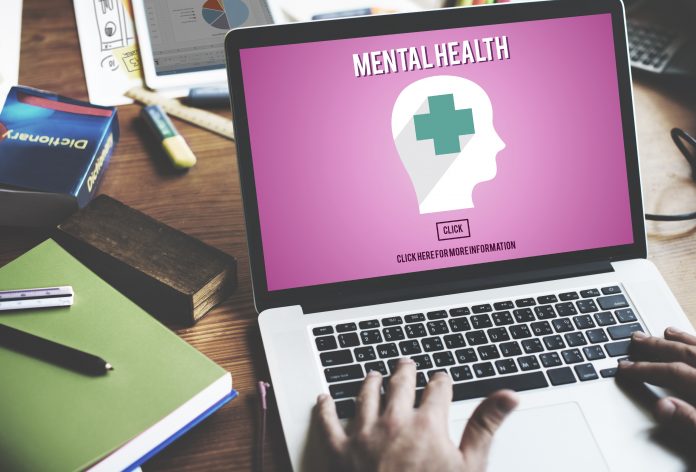Brendan Street, Professional Head of Emotional Wellbeing, Nuffield Health, explores whether technology can have a positive effect on our mental health
While some forms of technology may have made positive changes in the world of work, there is evidence for the negative effects of technology and its overuse, as well.
Smartphones and tablets mean emails can be accessed at the swipe of a screen, especially if employees use their personal devices for work. They even appear on our wrist. It can feel impossible to escape constant notifications and individuals may feel ‘always on call’ and struggle to switch off from work, long after the day has ended.
Concerns surrounding technology overuse, have also been exacerbated by the global pandemic resulting in issues like ‘Doomscrolling’ and ‘Zoom fatigue’.
Technologies can have a physical impact on the body too. Promoting a “down and forward” posture, meaning the person is constantly hunched forward and looking down at the screen. This can put an unnecessary amount of pressure on the neck and spine and may lead to musculoskeletal issues. Prolonged staring at screens can also put a strain on our eyes.
On the surface, blanket policies, which limit technology, might seem like a sensible approach. But the rise in remote working means it is now almost the ‘new norm’ for employees to work non-traditional, more flexible, hours.
The University of Sussex launched a report suggesting banning out-of-hours emails, and the resultant perceived reduction of autonomy and flexibility, ‘could harm employee wellbeing.’
It’s true, technology overuse can have an overwhelming impact on the brain and body. However, businesses can introduce policies, which help to balance the benefits and risks of technology. Technology can improve work/life balance and provide accessible emotional support.
Get appy
Technology – like apps based on smartphones and computers – can complement corporate wellbeing programmes positively, making investments more cost-effective and beneficial to both employers and employees.
Businesses are developing in-house technology to better monitor and support employee physical and mental health. Nuffield Health launched a new online digital platform PATH (personalised assessment for tailored health), which uses historic and real-time health data to understand the physical and mental wellbeing needs of employees.
In-house digital platforms help businesses provide a more tailored benefit to reduce absenteeism and increase productivity. Many use several evidence-based mathematical algorithms to determine a person’s risk factors and generate a completely tailored assessment for them. The data collected can be used to drive an organisation’s future wellbeing strategy, increasing the success rate and return on investment.
Technology is making the process of seeing a GP faster and simpler, without employees having to join lengthy waiting lists and take time out of the office. For example, virtual GP services are designed for the way we live and work today, allowing employees to get advice and treatment they need via secure online video or phone consultations anywhere and anytime.
Outside of the professional workplace, there’s been a growth in downloads of mindfulness and meditation apps. Encouraging employees to use subscription-based services in their free time like Calm and Headspace can be beneficial, so they can learn to nurture better self-care outside of work.
These apps offer digital escape through guided relaxation and stress-reducing exercises. During the first lockdown in March 2020, downloads of these apps hit 750,000, marking a 25–29% increase since the start of that year.
Talking to tech in crisis
For many people, the notion of sharing a vulnerability or admitting a problem is a barrier in itself. However, some research suggests counselling conducted online is as effective as face-to-face sessions. During 2020 Nuffield Health therapists delivered 3.7 million minutes of therapy remotely.
For those employers without wellbeing services now is the time to review what technological tools are available that will make a difference to your workforce. There are plenty of wellness options that can be offered to staff, which are successful both in-person and remotely.
For example, in addition to smartphone apps that promote mental wellness, certain platforms are available that allow patients to complete courses of cognitive-behavioural therapy. It can also be delivered safely and effectively by phone, video or email for flexibility and privacy.
Other types of therapy, which are also safe, effective, and accessible remotely, include counselling (e.g., relationship, bereavement), interpersonal therapy, and access to psychiatric assessments.
More accurate data collection
Many assessment methods in mental health care and research rely on self-reporting, but the resulting data are subjective and burdensome to collect.
However, mobile phones and other Internet-connected devices provide an opportunity to continuously collect objective information on behaviour, generating a rich data set, which provides insight into the mental health needs of individuals within the workforce. This data collection becomes the ‘pulse’ of the organization informing wellbeing strategies.
Insights can be used to alert people to the need for self-management before potential issues — and the associated symptoms — become more severe. Individuals can also choose to share these data with health professionals or researchers.
Digital communities
Research shows communicative technologies can be effective intervention tools for loneliness. During the recent period of physical distancing, maintaining contact with friends, loved ones and work colleagues via technology was often the only option.
Research supports the idea communicative technologies and digital services can be effective intervention tools in these circumstances.
A meta-analysis that examined loneliness interventions for older adults in Poland and Italy discovered interventions involving technology were some of the most successful ways to decrease loneliness during the pandemic.
What actions should UK workplaces take?
While the future of what a post-pandemic workplace will look like is not certain, it does seem like a ‘hybrid work environment’ – a mix between remote and in-office working – is here to stay.
Support should be tailored for individual staff members if businesses are to provide facilities or the expectation that staff may be required to work additional hours or from home. The “one size fits all”, lap-top and go, concept isn’t supported by research so, instead of placing limits on technology, businesses should personalise their wellness offerings to the needs of individuals. This means working out what suits your workforce, identifying staff at higher risk of stress or distress and coordinating the right emotional support.
Emotional wellbeing support can be seamlessly adapted to meet the needs of remote workers and it’s up to employers to signpost them.
This may include providing access to Employee Assistance Programmes (EAPs), which provide direct telephone access to a mental health specialist. Similarly, remote Cognitive Behaviour These sessions allow individuals to speak with a psychotherapist who can help individuals to understand and address unhelpful behaviour and thinking patterns, reduce distress and increase productivity.
Other measures for those back in a physical workplace could include introducing break-out areas, which encourage employees to take time away from their computers and devices, during the working day.
If companies consider that stricter policies around answering out-of-hours emails are required, this should be customised to the type of work each team carries out. For example, they could implement policies that discourage emails sent over weekends.
Setting guidelines for what constitutes as an ‘emergency, ‘ which requires an immediate response would be useful, as well as setting notifications on devices to support this.











